When I was in college, in the dark days before email and Facebook, my roommates and I passed our time with more mundane matters. Like food. From Juli, I learned about Japanese-style curry. Rie taught me how to blanche green beans perfectly, while Ed opened my palate to an entire pantheon of slow-simmered soups. Pierrette’s trick with tuna and egg salad—grating onion into the mayonnaise—still perks up my sandwiches.
From Maria, though, I learned the most important lessons: cooking with my senses.
While I watched, Maria made tortillas with handfuls of flour and finger-lengths of shortening. Growing up in Texas, she had to wake up early every morning to make the family’s tortillas, forty on an average day and maybe a hundred or so for special Sundays. She grabbed an empty wine bottle whenever she needed to roll out dough, and from only two pans she made incredible feasts for our house. None of us would admit to being homesick, but listening to Maria talk about her food and then eating her meals made all of us feel like we actually belonged in that drafty, tumble-down, New England house.
I don’t have any of her recipes, because she never wrote them down, but like stories and memories, I can recite them just as she did.
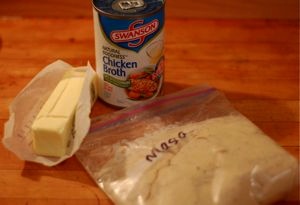
“In San Antonio, where my family lives, you can find bags of masa dough in the markets. My mother doesn’t need to make her own anymore. We use Crisco now, but if you want, you can use lard or butter. Even oil. But I would never use oil. Why make tamales with oil? If you don’t have chicken stock, some water from the tap is good. Just remember to add salt then.”
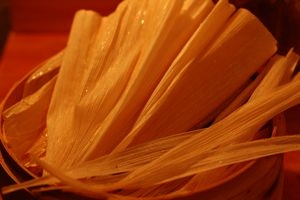
“Be sure to open the middle of the husks when you soak them and put a plate on top, so they can get wet equally. Save the biggest ones for wrapping. The smaller ones, just tear like this into ribbons for tying.”

“Mix together a six handfuls of masa, two handfuls of Crisco, the same amount of stock and some salt. Blend them together really well. We use a mixer at home. You can tell when you have the right combination when a little ball of the dough floats in water.”
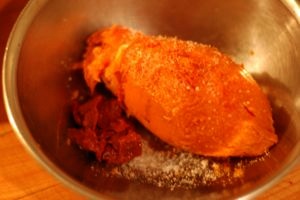
“You can fill them with anything really. We use pork that my mother cooks, but here at school I put all kinds of things in them. Today, I took some of the sweet potatoes from the cafeteria.” [In the photo, you can see a dollop of chipotle sauce that I now like to add to my sweet potato tamales, plus a sprinkling of kosher salt. After sweet potatoes or yams are roasted whole, their peels slip right off; mash with a fork.]
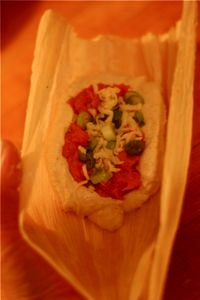
“Spread a little bit of the dough on the corn leaf, enough to cover a third of it. When you put the filling on, be sure to leave a little of the dough peeking around the edges, so that it will close up well.” [In this recent version, I topped the sweet potatoes with some grated pepper jack cheese tossed with sliced scallions.]
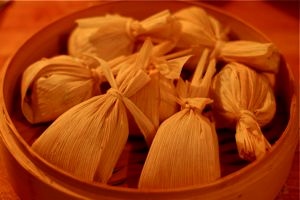
“Fold the leaf in thirds, like a letter, then bend up the end. Tie it, if you want. Or, if you are making a lot, you can just put them down close together and they will keep each other closed. You need to steam them for a long time, longer than you really want. Open one and try it to see if it’s done. They like it if you put a towel over them while they steam. [Chinese bamboo or metal stackable steamers are perfect for steaming tamales in single layers. Small tamales require 40 minutes and larger ones up to 1 1/2 or 2 hours to cook through.]